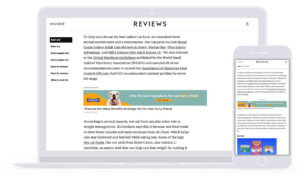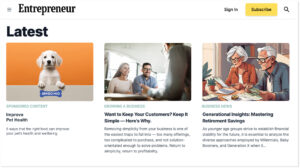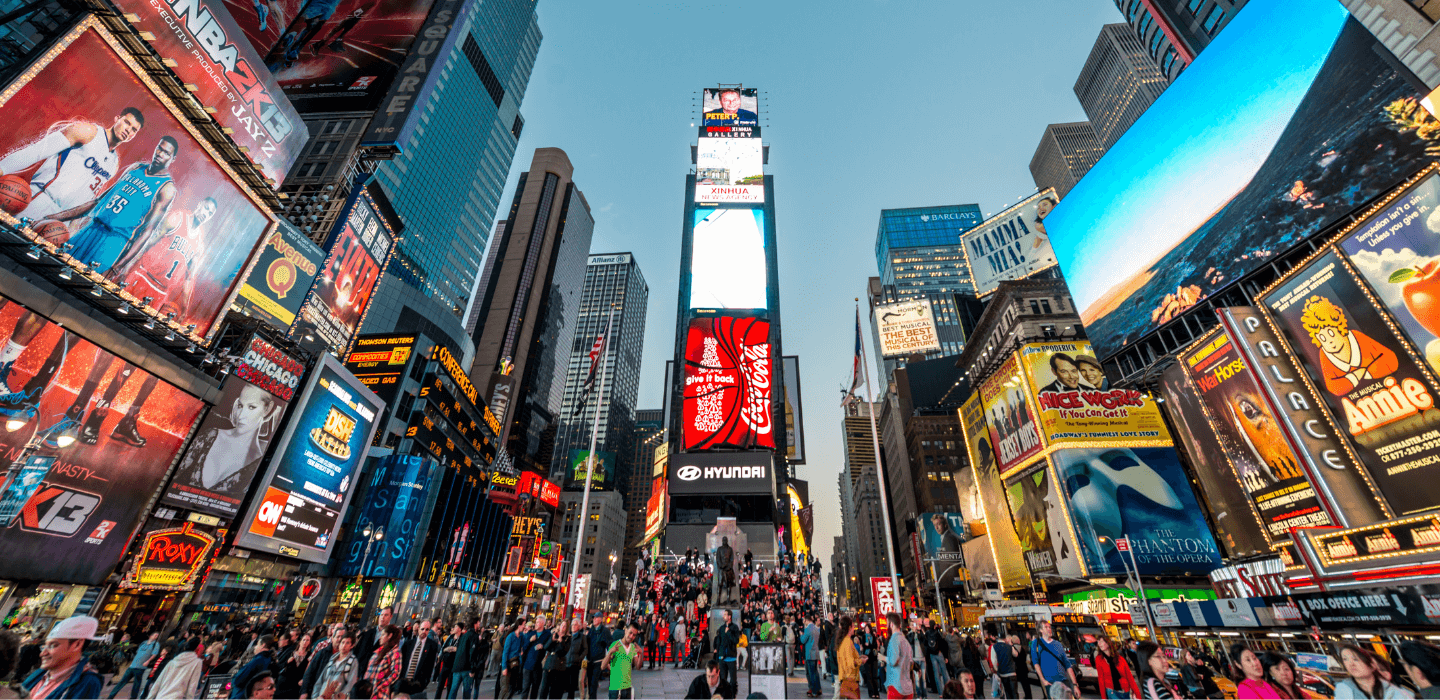U.S. spend on native advertising is expected to top $98 billion this year, accounting for three out of every five dollars spent on digital display ads. It will be money well spent.
In an era where consumers are more discerning than ever, native advertising stands out as a subtle yet powerful approach that seamlessly integrates promotional content into the natural flow of the user’s online experience. This unobtrusive strategy not only respects user preferences but also enhances engagement by delivering relevant, informative, and entertaining content. Likewise, as social and search advertising channels become increasingly saturated and face mounting privacy concerns, native advertising can fill the gap, offering brands an authentic way to connect with their audiences in a contextually relevant way.
Table of Contents
- What is Native Advertising?
- Example of Native Advertising and Formats
- Is Native Advertising Still Important in 2024?
- Why is Native Advertising Controversial?
- What Are the Benefits of Native Advertising?
- How Does Native Advertising Work?
What Is Native Advertising?
Native advertising is characterized by the seamless integration of promotional content within the organic context of a platform, website, or publication, with ad units designed to match the format and style of the surrounding content. Native ads blend into content on a publisher’s website by matching aspects like font, location, and image size of content to increase the likelihood of a consumer engaging with the ad. By matching the aesthetic and being contextually relevant to a site, native ads provide consumers with a seamless, nondisruptive advertising experience. These ads can appear in a variety of formats.
Examples of Native Advertising and Formats
The goal of native ads is to not stick out, but rather to provide a seamless experience for the user while also delivering valuable content. For this reason, there’s a variety of formats a native ad can take, depending on the site and experience within which they appear. Below are a few examples of common native ad formats and manifestations.
Social Native Ad Example

Social native ads are designed to look like just another post within a user’s social media feed, aside from some light “sponsored” labeling. The more authentic these ads can appear, the more likely they are to garner attention.
Open Web Native Ad Example

Native ads on the open web are usually distributed through ad networks or other ad-serving platforms that match them with relevant publications. These ads blend into the flow and design of the site, and the content promoted within them reflects the themes and approach of the publication as well.
Sponsored Content Native Ad Example

While there is overlap between open web native ads and sponsored content native ads, sponsored content native ads are more likely to refer to content that was created by or in partnership with a specific publisher. While this content will have a flag to denote it’s sponsored, it will still look very similar to other posts on the publisher’s site and might also be promoted through sponsored ad units on the publisher’s social media channels and other owned properties.
Promoted Listing Native Ads Example

Promoted listing native ads appear on ecommerce websites such as Amazon, Walmart, Target, and other retail sites. They show up like other products or services that consumers see, just with an “Ad” connotation next to them. Native promoted listings greet consumers as they shop for products or services similar to those offered by the advertising brand.
Suggested Content Native Ads Example

Suggested content native ads are slightly unique among native ad formats in that they don’t necessarily look like the rest of the content on the page. These ads are integrated into the publisher’s content, but they do not have the same appearance as the feed. They might appear at the end or within the content of an article, and are distinguished by cues such as “You May Also Like” or “Recommended for You.”
Is Native Advertising Still Important in 2024?
The modern concept of native advertising in the digital age has been around for more than a decade, and the principles of native advertising date back to the humble origins of the advertorial. Despite its long history, native advertising has never been more relevant than it is today.
Native advertising continues to deliver value to consumers while respecting the consumer’s experience. In fact, three-quarters of consumers say they trust the sponsored content delivered to them in editorial environments.
Particularly as third-party cookies vanish in Chrome in 2024, advertisers are going to need powerful ways to remain relevant with their audiences, despite the loss of the ability to track their actions across large portions of their consumer journeys. The contextual power of native advertising, in partnership with its robust user experience and the trust it fosters, means native advertising is going to be a more important component of the modern advertiser’s toolbox than ever before.
Why Is Native Advertising Controversial?
Historically speaking, sponsored and branded content have come under occasional fire due to the possibility that consumers could mistake the promotional content as strictly editorial in nature and, thus, be misleading. This criticism naturally extended to native advertising in the digital age, particularly in its early days, before standards had been defined.
Fortunately, a great deal of work has been done within the industry to mandate, clarify and standardize how sponsorship is disclosed within the context of native ads. For example, the Federal Trade Commission released “Native Advertising: A Guide for Businesses,” in which it provides details on its enforcement efforts to ensure native advertising is neither “deceptive or unfair” and that consumer interests are protected through proper disclosures of content sponsorship. The agency encourages native advertising content to feature clear, unambiguous language, labeling content with terms such as “Advertisement,” “Paid Advertisement,” “Ad” or “Sponsored Advertising Content.”
From an industry standpoint, IAB has also weighed in on the topic of native advertising with its “Native Advertising Playbook.” In this document, the organization lays out different native ad types and a framework for evaluating them, along with disclosure guidance from both IAB and FTC.
Ultimately, when advertisers and native advertising partners follow best practices, there’s little room for consumer confusion about the nature of a native ad and the content it promotes. Audiences appreciate clear disclosure of sponsorship relationships while still finding value in the content that is featured.
What Are the Benefits of Native Advertising?
One of the reasons native advertising has become so popular is that it provides benefits not just to advertisers, but also to consumers and publishers. Some of the many benefits include the following.
Higher CTRs and Performance for Advertisers
According to research by Outbrain and the Content Marketing Institute, the average CTR of native ads outperform push advertisements by 5-10X. This higher performance leads to a better overall return on ad spend (ROAS). In addition, because native ads provide access to valuable content, they tend to throw a halo around the brands that leverage them.
A Powerful Experience for Users
Publishers and advertisers can appeal to audiences with a seamless native advertising experience in which they encounter the sponsored content unit as a part of the natural experience of the page. Plus, because native ads are designed and placed to find users in discovery mode — that is, when they’re broadly considering a topic or product category — they add value to the on-page experience.
Better Relationships and Monetization for Publishers
Native ads blend seamlessly with the publisher’s content. This leads to a better overall user experience, encouraging users to spend more time on a publisher’s site. Native ads also tend to have a higher yield for publishers, and successful campaigns can lead to ongoing partnerships between publishers and advertisers, fostering long-term relationships that benefit both parties.
How Does Native Advertising Work?
Creating a successful native advertising campaign involves a strategic and creative process that integrates promotional content into the natural flow of a platform or publication where a target audience is most likely to be seeking information. Here are the four key steps involved:
1. Define Objectives and Target Audience
A strong campaign begins with a clear definition of objectives. What are you trying to achieve? Is it brand awareness, lead generation or sales? Understanding your goals will shape the rest of your strategy.
Next, identify your target audience. Who are the people you want to reach with your native ads? Develop detailed buyer personas to understand their demographics, interests, and behaviors. This information is crucial for crafting content and finding outlets that resonate with your audience.
2. Content Creation
Content is the heart of a native advertising campaign. Create content that aligns with the interests of your target audience while conveying your brand’s message subtly. Depending on the platform and format chosen, this could be in the form of sponsored articles, videos, infographics, or social media posts. Ensure that the content is informative, valuable, and engaging. Collaboration with content creators, copywriters, and designers might be necessary to ensure your content and presentation is top-notch.
3. Integration and Placement
Choose the platforms and publications where your native ads will appear. This should align with your target audience’s online behavior and preferences. Work closely with the selected publishers to seamlessly integrate your content into their environment. Ensure that the content matches the format, tone and style of the surrounding editorial content, so it appears organic and seamless.
4. Measurement and Optimization
After your native advertising campaign is live, it’s crucial to analyze its performance. Examine the data to understand what’s working and what isn’t. Adjust your strategy accordingly by refining your content, targeting, and distribution methods. Native advertising campaigns often benefit from ongoing optimization to maximize their impact and ROAS.
Conclusion
The key to successful native advertising lies in its ability to provide value to both brands and their target audiences. By crafting content that aligns with the interests and preferences of readers, advertisers can foster genuine connections and trust. And, importantly, they can drive their most coveted audiences from mere awareness to true consideration.
Going forward, native advertising will continue to evolve, driven by advancements in technology, changes in consumer behavior, and the quest for more engaging and personalized content experiences. With a clear understanding of the nuances and principles of native advertising, brands can navigate this changing landscape and build stronger connections with their audiences, ultimately driving meaningful results in a world where content remains king.




